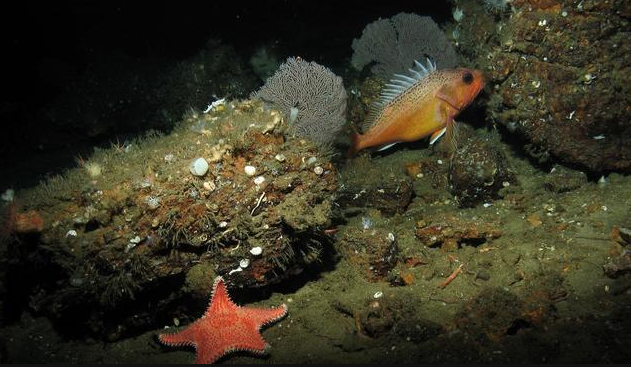
16 Nov 2016 Op-Ed: Stand Up For The Sea Floor
by Alexandra Cousteau and Ted Danson
The Pacific Ocean off California is unlike any other place in the world. Its fluorescent sunsets and powerful waves have been the inspiration for pop culture, art, education and conservation. Visitors and locals alike flock to California’s 840 miles of breathtaking coastline. However, just beyond the limits of the naked eye lies an important part of the ocean that many people don’t know about, the seafloor. Remarkably, we know more about the moon orbiting the Earth about 230,000 miles away than we do about the seafloor.
While ocean exploration has come a long way in the last several decades, less than 0.5 percent of the world’s ocean has been explored, photographed or filmed. This summer a team of researchers and explorers with Oceana, MARE (Marine Applied Research & Exploration) and the National Oceanic and Atmospheric Administration embarked on a scientific expedition to document deep sea life in the Southern California Bight offshore of Los Angeles. The resulting footage and data unveiled a remarkable underwater world unlike any other.
Imagine a colorful underwater forest of gold, purple and pink coral colonies comprised of thousands of individual animals. These structures, like sponges, rocky reefs and underwater canyons, are habitat for dozens of fish species — many are sought after in commercial and sport fisheries — and are frequented by octopus, sea stars and crabs. The expedition’s images show shark egg cases hanging on coral branches like decorations, rockfish nestling into cylindrical sponges, eels peering out of rocky reefs and basket stars precariously balancing on sponges shaped like vases. These diverse seafloor structures provide shelter, feeding grounds and breeding areas for countless species of marine life.
Without healthy productive seafloor habitats, the oceans wouldn’t be the same. In order to balance a vibrant fishing economy and ocean biodiversity, we must protect the oceans from the seafloor up.
The greatest known threat to seafloor habitat is destructive bottom trawl fishing gear. In this industrial fishing practice, heavy equipment that drags along the ocean floor holds open large nets, scooping up not only the targeted commercial fish species, but also nearly everything else in the path of the trawl. Corals, sponges and other living seafloor structures are toppled, crushed or ripped from the seafloor. Growing only millimeters a year, corals and sponges could take hundreds to thousands of years to recover, if ever. Currently, bottom trawling off Southern California only occurs in shallow, nearshore waters, leaving the vast majority of seafloor wilderness pristine. This provides a unique opportunity to protect this exquisite habitat now.
The California coast is an aquatic treasure trove supporting one of the busiest marine highways in the world. Fed by cold nutrient-rich waters, the California Current has been nicknamed the “Blue Serengeti” as it is home to whales, dolphins, fish and sea turtles that migrate up and down the coast, provides nurseries for sharks, hosts rookeries for sea lions and so much more. The brilliance of ocean wildlife that converges here makes it globally significant. A healthy seafloor, in turn, helps this ocean wilderness flourish.
Federal fishery managers have an opportunity at their meeting in Southern California this month to safeguard these deep sea ecosystems from a future of destruction by bottom trawl gear. The Pacific Fishery Management Council has taken action before to prevent the expansion of destructive bottom trawling. We are asking this management body to extend this precautionary approach to seafloor areas off Southern California, a truly unique gem right off our coast, while maintaining the nearshore fishing grounds where trawling already takes place.
While most of the Southern California seafloor has yet to be explored, the places that scientists have visited are vibrant, unspoiled and unlike any other across our water planet. We want new discoveries to be made through a camera lens, not seen for the first time broken and dead in a trawl net.
Some of the most known fragile seafloor structures from California to northern Washington were protected in 2006. Research expeditions over the last decade demonstrate the many undersea treasures still being discovered that are risk if we expand bottom trawling over the California seafloor.
The Pacific Fishery Management Council is scheduled to discuss the fate of Southern California’s seafloor and accept public comments at its meeting in Garden Grove on Friday.
We invite Southern Californians to stand up for the deep sea and help save the seafloor.
Cousteau is a senior advisor to Oceana, is a part of the National Geographic Emerging Explorers Program, and a filmmaker and globally recognized advocate on water issues who continues the work of her renowned grandfather Jacques-Yves Cousteau and her father Philippe Cousteau Sr. Danson is an award-winning actor, longtime ocean advocate and Oceana board member.

